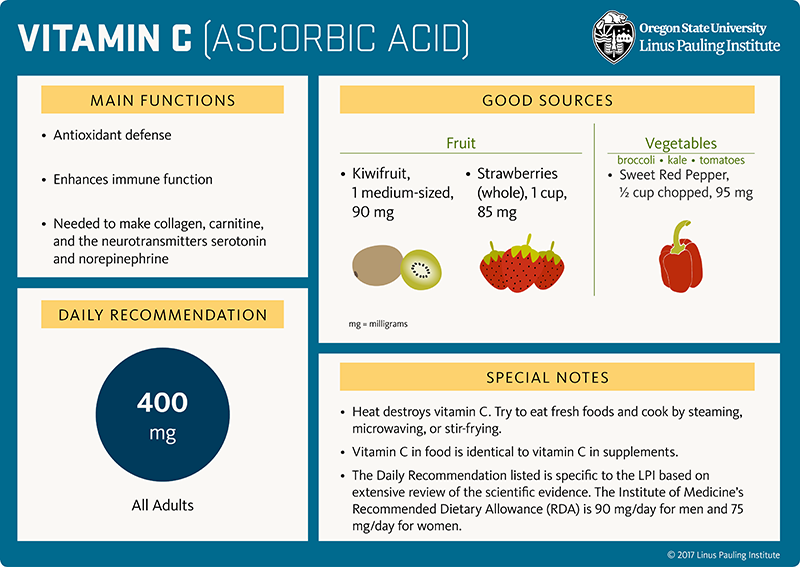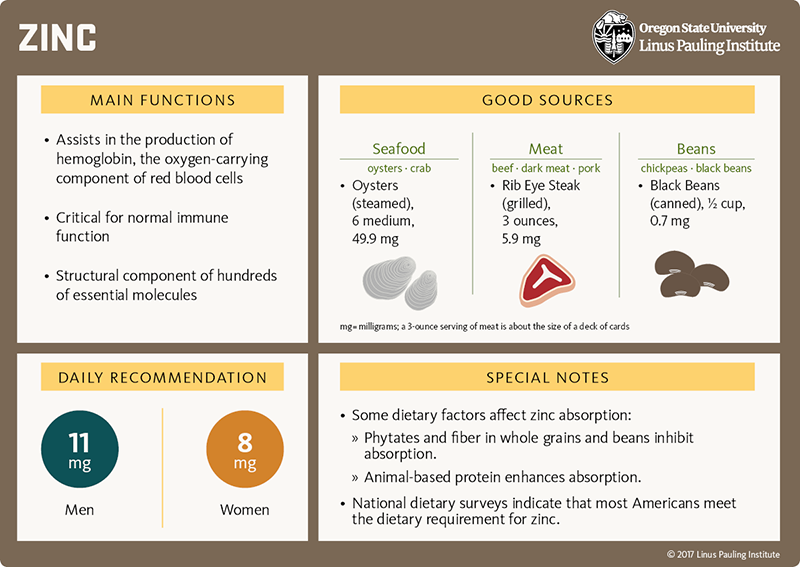Common Cold (original) (raw)
Nutrition Research
Summary
Meeting the recommended levels of intake for all essential micronutrients is important for optimal immune function (see Immunity In-brief article). When it comes to the common cold specifically, there is evidence that routine supplementation with vitamin C can reduce the occurrence and duration of the common cold in certain individuals. Use of oral zinc lozenges may influence cold symptoms and duration, but there are important caveats associated with their use.
Condition Overview
The common cold is a viral infection of the upper respiratory tract (nose and throat).
Causes
Any one of hundreds of viruses can cause a common cold, but rhinoviruses are the most common culprits. It is possible to get a cold at any time of the year.
Viruses that cause colds spread through the air and upon contact. Thus, avoiding contact with infected individuals and washing hands often help to reduce the risk of common cold.
Symptoms
Symptoms usually appear one to three days following exposure to a cold-causing virus and then last 7 to 10 days. Common cold symptoms include sore throat, congestion, runny nose, coughing, and sneezing. These symptoms may be accompanied by low-grade fever, mild headache, and slight body aches.
Common cold versus influenza (the flu)
Both the common cold and influenza (the flu) are contagious respiratory illnesses with similar symptoms. However, cold and flu are caused by different viruses and, in general, flu symptoms are worse than common cold symptoms. Additionally, fever, body aches, extreme tiredness, and dry cough are more common and intense with the flu. Serious illness and complications can develop from the flu, such as pneumonia, bronchitis, sinus and ear infections, and even death.
If flu is suspected (e.g., fever, aches, chills) and symptoms persist (fever lasting longer than three days or cough continues for several weeks), it is recommended to seek a doctor’s advice.
The nutrition information presented here refers only to the common cold. See the Centers for Disease Control and Prevention website for information about influenza.
Nutrition Research
Vitamin C
What it does
General
- Vitamin C (ascorbic acid) is a water-soluble vitamin that neutralizes a variety of reactive oxygen species and recycles important cellular antioxidants.
- Vitamin C is also a cofactor in numerous enzymatic reactions involved in the making of collagen, L-carnitine, and several neurotransmitters, and in the regulation of gene expression.
Immune-specific
- Immune cells generate reactive oxygen species to kill invading organisms; vitamin C protects immune and nearby cells from damage by these substances.
- In vitro studies suggest that vitamin C may increase the production and function of certain immune cells that help engulf and kill foreign invaders.
- Vitamin C may reduce plasma histamine levels by destroying the histamine molecule directly.
What we know
- Routine supplementation with vitamin C (0.25 to 2 grams/day) does not reduce the occurrence of the common cold in the general population, but it does reduce the occurrence of the common cold in individuals undergoing heavy physical stress, such as marathon runners, skiers, soldiers in subarctic conditions, and individuals with marginal vitamin C status.
- Routine supplementation with vitamin C slightly reduces the duration of the common cold in both children (14% reduction) and adults (8% reduction).
- No beneficial effects are seen when vitamin C supplements are taken after the onset of cold symptoms.
DEFINITIONS
**Reactive oxygen species - highly unstable oxygen-containing compounds that react easily with nearby cellular structures, potentially causing damage
Antioxidants - compounds that prevent or repair the damage caused by reactive oxygen species
In vitro experiment - a research experiment performed in a test tube, culture dish, or other artificial environment outside of a living organism; in vitro is a Latin phrase meaning in glass
For references and more information, see the Common Cold section in the Vitamin C article.
Zinc
What it does
General
- Zinc is an essential trace mineral that is required for normal cell growth and development, facilitates oxygen transport and storage, and assists several antioxidant enzymes.
Immune-specific
- Zinc is required for the growth and development of cells that carry out the immune response.
- Zinc is also a structural and functional component of proteins and enzymes critical for normal immune function. One such zinc-containing antioxidant enzyme, superoxide dismutase, protects immune cells from reactive oxygen species that are generated to kill invading pathogens during an immune response.
- It is not yet known precisely how zinc might influence the common cold. Test tube experiments indicate that zinc might block the attachment of rhinoviruses to the lining of the nasal cavity or inhibit the activity and replication of respiratory viruses.
What we know
- High-dose zinc acetate lozenges started within 24 hours of cold symptom onset may reduce the duration of the common cold. However, there are several important details to keep in mind regarding this effect:
- Formulation - zinc acetate and zinc gluconate lozenges readily dissolve and release zinc ions, making them available to act locally in the pharyngeal region (the part of the throat behind the mouth and nasal cavity). Some formulations that contain additives (e.g., magnesium, certain amino acids, citric acid) show no benefit of zinc or even worsen cold symptoms.
- Dose - the effective dose is more than 75 milligrams (mg) of zinc per day. This dose is substantially higher than the recommended dietary allowance (RDA) and higher than the tolerable upper intake level (UL) for zinc.
- Side effects - common side effects include bad taste and nausea. Use of zinc lozenges at daily doses of 50 to 180 mg for one to two weeks has not resulted in serious side effects.
- Zinc nasal gels and sprays do not appear to benefit the duration or severity of the cold symptoms and may cause loss of the sense of smell, a potentially irreversible side effect.
DEFINITIONS
Antioxidants - compounds that prevent or repair the damage caused by reactive oxygen species
**Reactive oxygen species - highly unstable oxygen-containing compounds that react easily with nearby cellular structures, potentially causing damage
RDA - recommended dietary allowance. It is the nutrient intake value that is estimated to meet the requirement of nearly all healthy people of a particular gender and age group in a population. It is a target value for an individual
UL - tolerable upper intake level. Set by the National Academy of Medicine (formerly, the Institute of Medicine), the UL of a specific nutrient is the highest level of daily intake likely to pose no risk of adverse effects in almost all individuals of a specified age
For references and more information, see the Common Cold section in the Zinc article.
This content was underwritten, in part, by a grant from Bayer Consumer Care AG, Basel, Switzerland.


